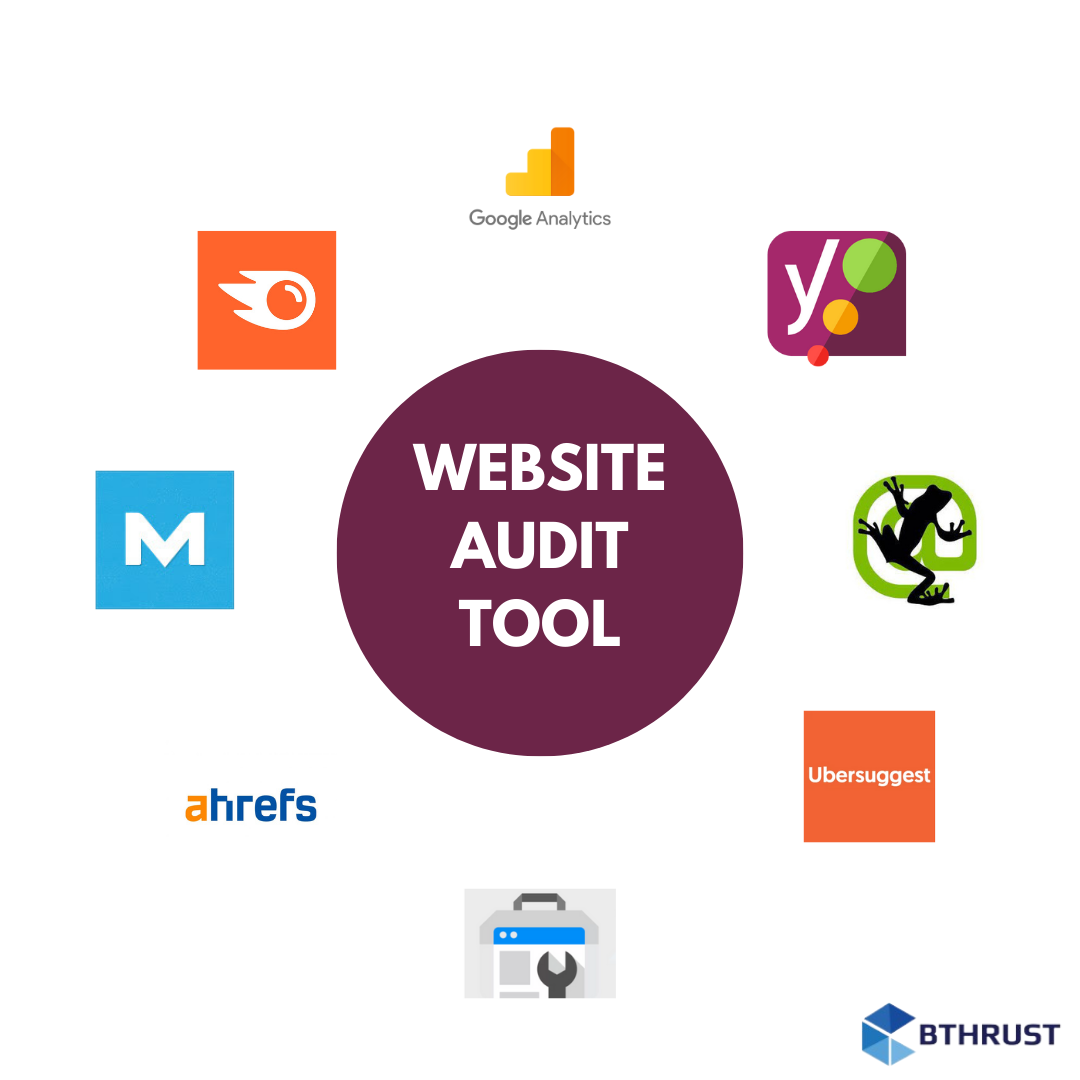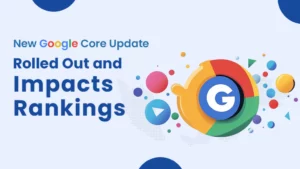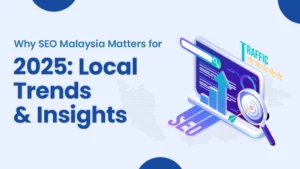Website traffic is essential for company owners looking to improve their brand’s identity, exposure, and reputation. It takes more than simply having a website; you also need to take calculated measures to boost traffic. Due to Google’s preference for pages that are regularly viewed and interacted with, high traffic increases search ranks. Additionally, traffic is a vital indicator of lead conversion and customer acquisition in digital marketing. In terms of generating income and profit, it outperforms other digital elements. Outdated methods fall short in today’s quickly changing digital environment, therefore it’s critical to implement modern, efficient tactics. This blog makes use of our wealth of knowledge and expertise as leading SEO services in Malaysia, to help you increase the amounts of visitors to your website.
Optimize Your Pages According to Search Engines for Human Beings
Balancing Search Engine Requirements and User Experience
Content that provides solutions and answers problems is what both people and search engines look for. Recognize your audience’s requirements first. Utilize applications such as Google Analytics to monitor user activity and modify your content appropriately. Recall that happy customers frequently return.
Creating Interesting and Educative Content
Your writing should be both educational and interesting. Keyword stuffing isn’t the only thing to do. Compose content that addresses the needs and interests of your readership. Make sure your content is factually correct and up to date, and use language that is clear and succinct. This strategy satisfies your readers and complies with search engine algorithms.
Sense of Urgency (Offers etc.)
Promoting a feeling of urgency in consumers might motivate them to act. Emphasize short-term or unique offers. Don’t be forceful; instead, use language that persuades and fosters a sense of immediacy. Finding the correct note to strike with your audience is key.
Optimizing Images and Videos for Multimedia Integration
Videos and pictures may greatly increase user engagement. Make the most of your multimedia by employing alt tags and descriptive file names, as well as file compression for quicker download times. This enhances user experience and makes your content easier for search engines to comprehend and rank.
Page Titles and Meta Descriptions
Meta descriptions and page titles are important. Users see them at the top of search results. Make them interesting and representative of the page’s content. To increase exposure, make them succinct and use pertinent keywords.
Social Proof: Reviews from Independent Websites
Take into account reviews from websites like Facebook and Google. Credibility and trust may be increased by social evidence. Genuine reviews are transparent and have the power to affect decisions, which increases user engagement and builds confidence.
Integrate Relevant Keywords on Your Page
The technique of strategically adding keywords on your webpage is essential to draw in the correct kind of visitors. To improve user readability, smart placement and a natural flow are just as important as loading your content with keywords.
Relevant Keywords Placed Strategically
Knowing your audience is essential to strategic keyword placement. Consider the words and phrases customers use to find your offerings. List the terms that fall into each of the primary categories that best describe your company. If you are selling men’s athletic footwear in Malaysia, you may start by using terms like “men’s sports shoes” or “men’s running sneakers”.
Putting these keywords where they matter most strategically is the next step after creating your list. This is done naturally in the initial paragraph, headers, titles, and the rest of the text. Note that your objective is to maximize search engine visibility for your content while preserving its readability and user relevance.
Ensuring Natural Integration for User Readability
The quality of your content should never be compromised by the use of keywords. Keeping the information engaging and informative should be your first goal. Integrated naturally, keywords should strengthen the material instead of taking away from its meaning. Consider incorporating the term “men’s basketball shoes” into a statement such as “Our latest collection of men’s basketball shoes in Malaysia combines style with functionality.”
Additionally, excessive use of keywords should be avoided since this might result in keyword stuffing. This may have a detrimental effect on your search engine rankings in addition to breaking the natural flow of your material. Strive for a balance between the appropriate and infrequent usage of keywords.
Regularly Publish Informative Blogs to Keep Your Audience Engaged
Importance of Regular and Informative Blog Posts
Fresh content is highly favored by search engines. Blogs that are updated often tell search engines, such as Google, that your website is current and relevant. This may result in improved search engine rankings, raising your profile and drawing in more natural visitors. Regular updates foster a feeling of community and loyalty in your audience, ensuring that they make repeated visits. Moreover, insightful writing establishes your business as a thought leader in your industry, which increases credibility and confidence.
Advice on Creating Interesting and Shareable Content
To produce content that engages your audience, you must combine creativity and preparation. The following advice can assist you in creating blog entries that are both interesting and spread:
- Recognize Your Audience: Consider your audience when writing. Adapt your content to their problems, requirements, and areas of interest.
- Keep It Clear and Simple: Make use of clear, basic language.
- Employ Active Voice: To make your writing more direct and vibrant, use the active voice while writing.
- Include Storytelling: Tell stories in your writing to increase its impact and retention value.
- Employ Visuals: Blend text with pertinent photos, films, or infographics.
- Provide Useful Content: Provide advice, instructions, or insights that your readers can put to use.
- Promote Communication: Encourage your readers to participate by offering them the option to check out your services, share the article, or leave a remark.
- Optimize for SEO: Optimize for search engines (SERPs) by using natural keyword density, optimizing your pictures, and organizing your information to make it easy to read.
Share Your Web Pages Effectively on Social Media Platforms to Increase Visibility
Leveraging Social Platforms for Content Distribution
Social networking is a great tool for distributing your site content in the modern digital age. Posting links isn’t enough; you also need to know how to use these platforms to properly engage your audience. Determine your target market’s social media preferences and target audience first. This strategy makes sure the appropriate individuals see your material.
Customize your content for each platform to have the most effect. Instagram users tend to prioritize visually appealing postings, but LinkedIn visitors can be more interested in professional, educational information. Don’t forget to include pertinent hashtags in your article to broaden its audience.
Strategies for Effective Web Page Sharing
- Dynamic Descriptions: To entice people to click through, descriptions should be clear, understandable, and appealing.
- Optimize for Shareability: Enhance Your Website’s Shareability by Adding Visible Sharing Buttons and Captivating Images.
- Timing Is Everything: For maximum engagement and share counts, post your content at peak audience activity.
- Engage Your Viewers: Respond to messages and comments.
- Track and Analyze: Utilize analytics tools to monitor and evaluate the effectiveness of your shared material.
Find New Keywords to Fill Content Gaps and Expand Your Reach
Finding and using new keywords in the always-changing field of SEO services is like finding secret routes through a thick jungle. It all comes down to identifying the uncharted territory in your content structures and illuminating it for your audience.
Finding and Applying Fresh Keywords
This journey begins with the identification of new keywords. Consider keywords as labels that direct readers to the content you provide. Start by listening to your audience to identify these. What subject are they discussing? What queries do they have? For finding these insights, Moz’s Keyword Explorer and other similar tools may be a real treasure.
After getting the knowledge of new keywords, it’s time to evaluate their search volume, relevancy, and other important factors for your website. Long-tail keywords that are more specialized and less competitive might sometimes be your greatest friends. Even while they may receive fewer searches, they frequently draw more focused and attentive users.
After getting the knowledge of new keywords, it’s time to evaluate their search volume, relevancy, and other important factors for your website.
Include these keywords in your text now. This does not entail cramming them into every available space. Rather, organically include them in your content, particularly in key areas such as headers, titles, and meta descriptions. Recall that the objective is to increase the discoverability of your material while maintaining its reader-friendly and educational value.
Filling Content Gaps for Enhanced Visibility
Fixing content gaps is similar to finishing a puzzle. Examine your current content, are there any subjects you still need to cover? Are there any unsolved questions? Here’s where you can use your new keywords to help you.
Producing content that closes these gaps has benefits beyond SEO services in Malaysia. It makes you appear to be an informed and trustworthy authority in your industry. It’s about adding value, responding to inquiries, and resolving issues for your audience.
Keep your terminology basic and your phrases brief during this whole process. Jargon and technical terminology should be avoided. If you must use technical jargon, be careful to provide a clear explanation. Making your material useful and accessible to as many individuals as you can is the goal.
Keep in mind that driving traffic to your website is not the only factor in successful SEO services. Getting the proper sort of traffic is key. You’re not just chasing stats when you find and use new keywords and fill in content gaps. You’re reaching further into the digital sphere, forming relationships, and earning people’s confidence.
Create Backlinks to Increase Your Website’s Authority and Credibility
Importance of Backlinks for Website Authority
Backlinks are more than just online connections that point to your website. They serve as a potent endorsement of your content’s authority and trustworthiness in the wide world of the internet. Consider backlinks as endorsements from other websites. Reputable websites that link to yours tell search engines like Google that the information you provide is reliable and worthwhile. This recommendation strengthens the overall authority of your website and increases its visibility in search engine results. There is a trust cycle at work here: the better your website ranks, the more high-quality backlinks it has, which increases visibility and generates more backlinks.
Strategies for Creating Quality Backlinks
- Producing Quality Content: When the content you produce is unique and valuable, other websites will want to share it and will provide a backlink to your website in the process.
- Using the HARO (Help a Reporter Out) platform: Bloggers and journalists look for professional advice and insights at HARO. By answering these questions, you may persuade the media to notice your website—often with a hyperlink.
Conduct a Technical SEO Audit to Identify Areas for Improvement
Conducting a Thorough SEO Audit
It’s the same as diving deep into your website’s internal workings to begin a technical SEO audit. Knowing the technological specifics that search engines employ to locate and prioritize your website is called a technical SEO audit. It aims to find areas on your website where you may enhance its functionality and raise its search engine rating.
Let’s start by breaking down the fundamental components of a technical SEO evaluation. Start by looking at your website’s structure. Are your pages easy for search engines to index and crawl? This is a crucial step because if search engines are having problems accessing your website, your content might as well be invisible to them.
Your website must be optimized for mobile since the majority of internet users access the web through mobile devices. This is about speed and functionality, not simply appearances. Users and search engines are pleased when a website is responsive to mobile devices and loads rapidly.
Another important consideration is page speed. Users may become irate and leave your website if it loads slowly, which might hurt your search engine results. Loading times may be greatly accelerated by minimizing redirects, optimizing pictures, and compressing data.
A further significant aspect of technical SEO is security. You may ensure that all data sent between your website and its visitors is protected and safe by implementing SSL (Secure Sockets Layer). It preserves user data and strengthens your website’s credibility with search engines.
SEO Audit Tools

You need the proper tools to carry out an efficient SEO audit. The top tools available on the market are:
- Google Analytics
- Google Search Console
- SEMrush
- Ahrefs
- Moz
- Screaming Frog SEO Spider
- Yoast SEO (for WordPress users)
- Ubersuggest
Internal Linking: The Backbone of Website Authority
What is Internal Linking?
Internal links are hyperlinks that lead from one page on your website to another inside the same domain. They are a straightforward yet powerful idea. Internal links make it easier to navigate inside your online domain and provide easy access to diverse material on your website, as opposed to external links that take you to another website.
How Does Internal Linking Aid in Raising a Website’s Authority?
Let’s now explore the true power of internal linking, which is increasing the authority of your website. Consider your webpage to be a library. Though every book (or web page) has a wealth of information, locating the correct book might become difficult in the absence of an internal link system or catalog. Similar to this catalog system, internal links lead visitors and search engines alike through the material of your website.
- Getting Around the Maze: Internal links open up sites for search engines to crawl and index more easily.
- Distributing the Wealth: Consider a well-liked page on your website to be an icon. It is well-known (high PageRank). Now, some of its reputation is transferred to other pages when this celebrity promotes it (via internal links). Internal links help your site’s less-popular pages gain more authority by dispersing PageRank throughout it.
- Improving User Experience: A visitor comes to your website in search of information. Internal links direct users to similar material by acting as signposts. This not only improves customer experience but also lengthens their stay on your website, which is something search engines greatly value.
- Creating a Relevance Web: Put simply, when you link to related pages, search engines are informed, “Hey, these pages talk about similar things.” This strengthens your website’s authority on the issue by fostering a theme consistency throughout.
- Avoiding Dead Ends: Dead ends are annoying, especially when they occur online. By ensuring that every page on your website is linked, internal links reduce the possibility that search engines may overlook orphan pages.
Update Outdated Content According to Market Trends
Identifying Market Trends and User Preferences
Understanding the requirements and aspirations of your audience is essential to being competitive in the digital era. This entails monitoring the quickly changing trends in emerging markets. You can determine what appeals to your audience by examining market research, user behavior, and feedback analysis. It all comes down to understanding their tastes and changing your material to satisfy their changing needs.
Strategies for Updating Outdated Content
- Content Audit: Regularly review your content to identify pieces that need a refresh.
- SEO Optimization: Update keywords and meta descriptions to align with current search trends.
- Visual Refresh: Incorporate modern, appealing visuals that reflect current design trends.
- Better User Experience: Improve navigation and readability.
- Incorporate Feedback: Use audience feedback to make relevant updates.
- Align with Current Events: Update content to reflect recent developments or news.
- Reformatting: Transform content into different formats like videos or infographics for broader appeal.
- Fact-Checking: Ensure all statistics and references are accurate.
- Internal Linking: Update internal links to direct users to your most recent and relevant content.
- Call-to-Action Update: Ensure CTAs are relevant and aligned with your current marketing goals.
Mobile Optimizations
Redesigning and reorganizing a website to make it more apparent, useful, and easily accessible on mobile devices—such as smartphones and tablets—is known as mobile optimization. Given that mobile devices account for a sizable amount of internet traffic, this procedure is essential.
A website’s ability to adapt to mobile devices comprises many crucial elements:
- Responsive Design: Layout and content are readily modified by responsive design to match different screen sizes.
- Speed Optimization: It guarantees rapid mobile network loading times.
- Simplified Navigation: For smaller displays, menus, and button designs are clear and simple.
- Touchscreen Compatibility: Design components that support touch interaction
- Readable Content: Without zooming in, text and media have been suitably sized for legibility.
- Cross-Device Testing: guarantees a consistent user experience on various mobile devices.
- SEO consideration: Optimized for mobile search engine ranking.
Voice Search Optimization
What Is Voice Search Optimization?
Voice search optimization is the art of making your website more voice search-friendly. This is a strategy that works with people’s natural communication styles, especially when utilizing digital assistants like Siri or Alexa. Unlike typing a query, voice searches tend to be more conversational and ask questions. The aim is to arrange your content in a way that efficiently and promptly addresses these voiced inquiries.
The Significance of Voice Search Optimization for SEO
In today’s fast-paced digital world, voice search is more than just a fad—it’s a fundamental shift in how users interact with search engines. Since a significant percentage of internet users now utilize voice assistants for their search needs, it is now necessary to optimize voice search. It’s a crucial part of SEO services in Malaysia that may significantly raise your website’s exposure and user experience. Voice search optimization will satisfy a growing user base and improve the SEO of your website. Because search engines give preference to websites that answer users’ queries in a clear, concise, and relevant manner, this tactic boosts rankings and may increase traffic.
Make Your Website Voice Search Ready in 2024
- Put Conversational Keywords First: Consider the queries that readers could have, then include them in your writing.
- Make Local SEO a Top Priority: A lot of voice searches are location-based, aiming to find nearby businesses or services. Make sure your local SEO is strong, using location-specific keywords and an updated Google Business Profile.
- Strive for Featured Snippets: The highlighted excerpts from search results are frequently spoken aloud by voice assistants. Organize your information such that it can be quickly skimmed and provides clear, succinct replies.
- Implement Schema Markup: This increases the likelihood that your content will appear in voice search results by helping search engines comprehend the context of your information.
- Mobile Optimization Is Essential: Given that a sizable portion of voice searches are made on mobile devices, your website has to be responsive and deliver a consistent user experience on all platforms.
- Speed Is Important: A website that loads quickly is crucial. Sites that load fast and effectively are preferred by users and, consequently, search engines.
Describe CTA (Call to Action): The Heartbeat of Web Engagement
CTAs direct users to the next action by acting as signposts. Effective CTAs have a direct influence on the performance of your website by converting inactive readers into active participants. Without them, readers can take pleasure in your material before leaving, unclear of what to do next. A call to action such as ‘Download Your Free Guide Today!’ is likely to generate more interest and lead to action than a straightforward ‘Click Here’.
Your CTAs must be in line with your marketing plan as a whole. CTAs are essential for turning website visitors into followers or customers; they are more than simply buttons. Whether it’s downloading a guide, making a purchase, or subscribing to a newsletter, they encourage consumers to move forward by offering clear guidance. Your call to action’s word choice may have a big impact. Make use of expressive, action-oriented language that connects with your audience. Compared to general prompts, phrases like “Join Our Community” or “Get Started Today” may work better.




